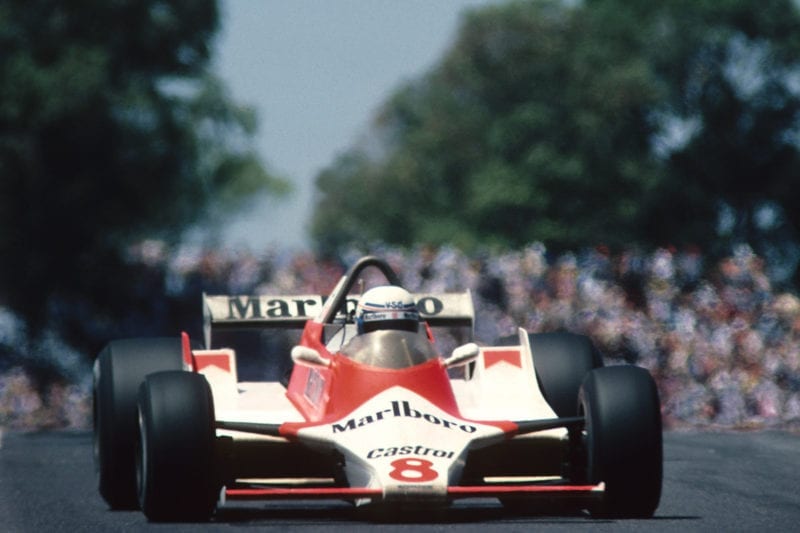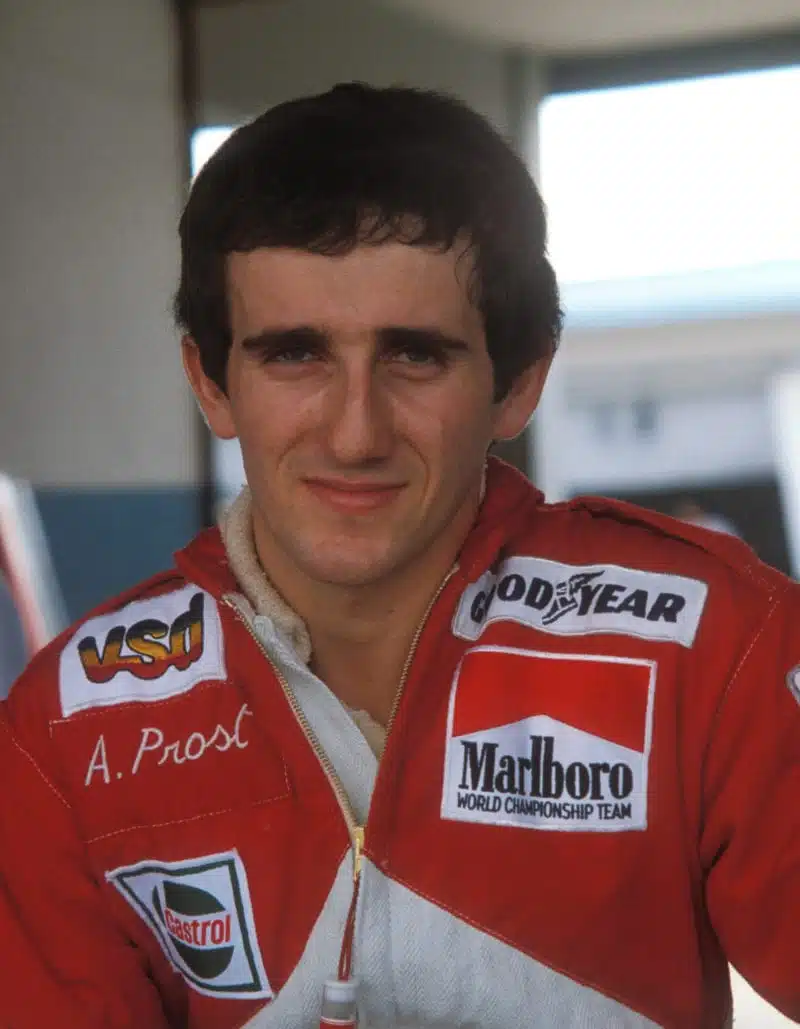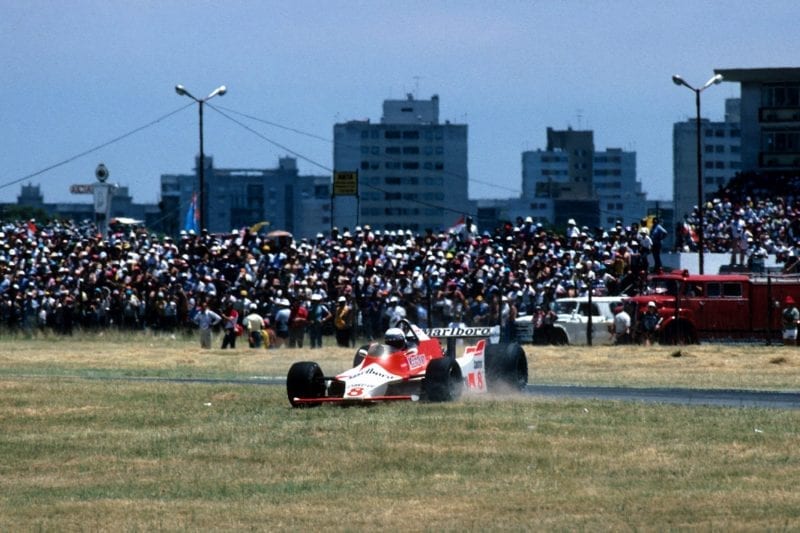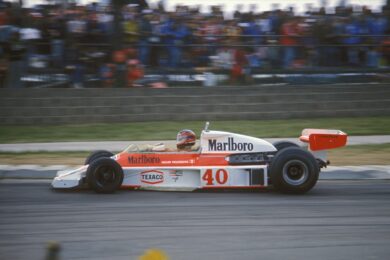The McLaren M29B was an updated version of the car that had been introduced mid-way through ’79 but which was still far behind the cutting edge designs from Williams, Brabham, Renault and Ligier. The 1980 season-opening race was held in the summer heat of a January Argentina weekend around the Buenos Aires circuit number 15, consisting of fast sweeps and severe bumps. But the bumps turned out to be the least of the concerns: the tarmac was being melted by the extreme heat and the tractive forces of the cars were then pulling up the upper surface. The track was repaired several times before race day. These were the tricky conditions in which Prost made his debut – and he starred. His rapport with Mayer, who acted as his race engineer, was terrific as he confidently set up the car to complement his preferred style of driving with no preconceived notions. In qualifying 12th, he lapped a full second quicker than Watson – though it was still 2.5s adrift of Alan Jones’ pole position in the Williams FW07.
As Jones blasted into the lead, Prost made up a couple of places from his grid slot, then made another as Villeneuve had a brief off-track excursion later in the lap. Prost completed the opening lap of his grand prix career in eighth place. Already the circuit was melting and Prost’s calculating brain was evident. “It was obvious there were going to be a lot of incidents,” he recalled in his later biography. “I saw it as an opportunity. My plan was to drive just as quickly but as carefully as I could in the conditions.” Others were more experienced, so he didn’t want to pit his improvisational skills against theirs when so unequipped. He had plenty of raw pace within him, but that was probably not what was going to be the important factor in this race. Consistency was going to be the most appropriate quality – for him, in these circumstances, at least. It was a very similar mindset to that which had led him to turn down those Ligier drives. Instead, he’d back away from the edge – and wait for others to have incidents.
So he was passed on the second lap by Keke Rosberg’s Fittipaldi and Jochen Mass’ Arrows, on the third lap by the recovering Villeneuve and on the fourth by the Lotus of Elio de Angelis. Sticking to his ‘calm and steady’ plan he picked up places as Mario Andretti and Mass both pitted. But by the 10th lap the circuit was thoroughly treacherous in places – and it caught him out. He spun over a kerb, losing places to Patrese and Derek Daly before rejoining. The incident had damaged a skirt on the McLaren, drastically reducing its ground effect grip for the rest of the race. He soldiered on, adapted to the changing track and compromised car and as others ahead of him retired (Carlos Reutemann, Patrese, Villeneuve, Jody Scheckter), he rose up to sixth place and thereby became one of the select group to have scored points on their debut. There was, however, only one classified finisher behind him: Zunino’s Brabham. Jones took the victory, ahead of Nelson Piquet’s Brabham and Rosberg.
Afterwards Prost was disappointed with himself. “If I hadn’t spun, I’d have been at least fourth, maybe even third,” he lamented. He’d have plenty of time to make amends. It was the beginning of a truly brilliant career.





